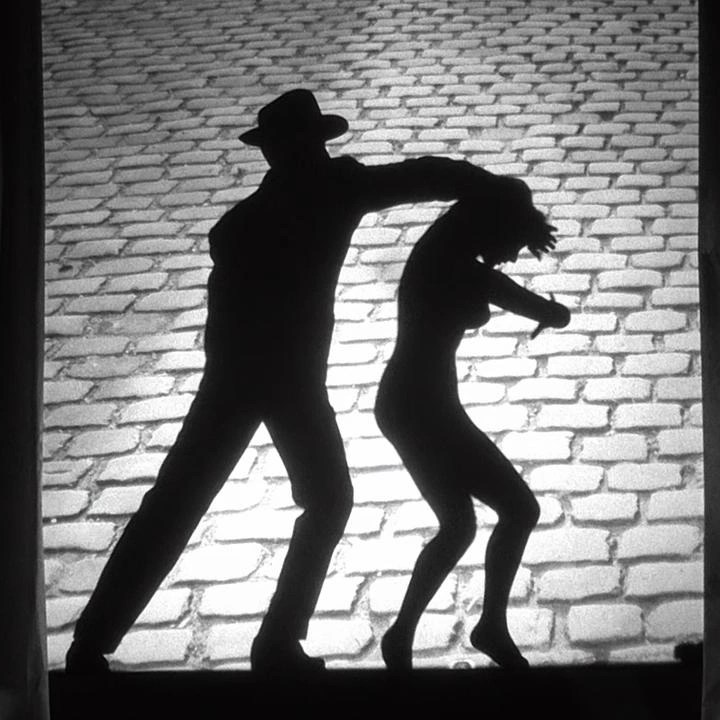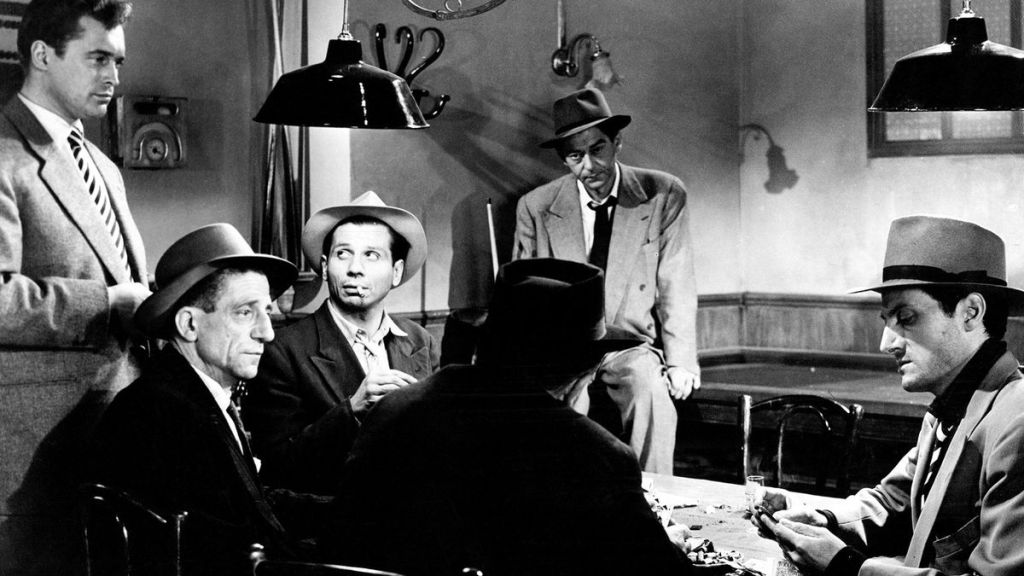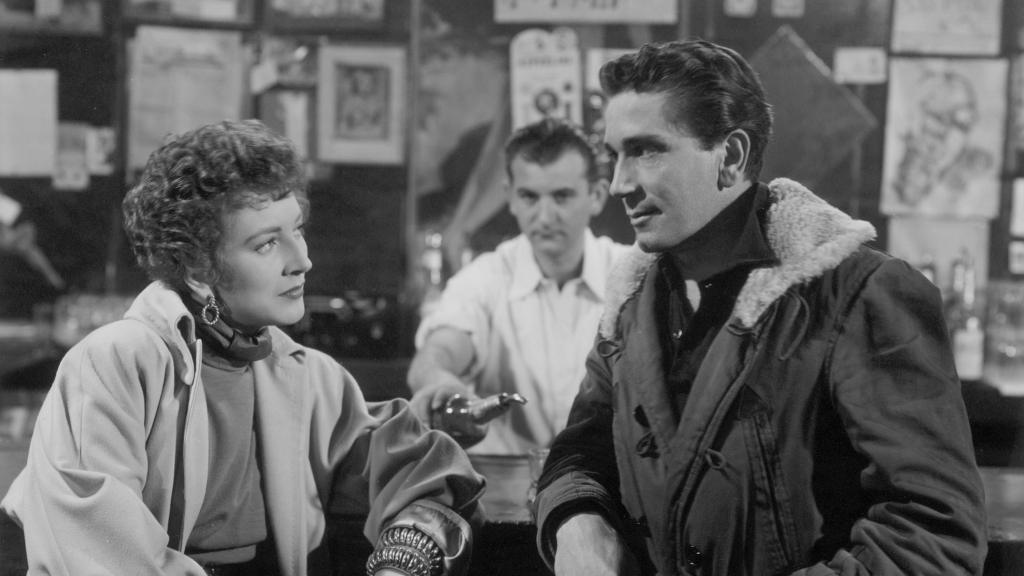Jules Dassin, an American director known for his mastery of the film noir genre, made significant contributions to cinema during the mid-20th century. His films, such as Night and the City and Rififi, are renowned for their gritty depictions of crime and urban life.
Initially aspiring to become a stage actor, Dassin found his way into the director’s chair in Hollywood during the 1940s. His early years in cinema were marked by social dramas and film noir. However, his career was disrupted by the Hollywood Blacklist during the McCarthy era. As a result, he relocated to Europe, where he continued his filmmaking journey and produced some of his most celebrated works.
Dassin’s films are characterised by their exploration of social issues, urban decay, and the moral ambiguities inherent in a life of crime. Brute Force examines the brutal conditions within prisons, while Thieves’ Highway sheds light on the corruption and exploitation within the fruit industry. These films reveal Dassin’s concern for the underprivileged and his critique of systems of power.
Blacklisted Auteur
Regarding visual style, Dassin has a knack for shooting on location, lending an authentic backdrop to his narratives. His meticulous use of shadows and light and his use of real cityscapes created a unique and highly atmospheric cinematic environment. For instance, the heist scene in Rififi is celebrated for its tension and realism, achieved through a detailed mise-en-scène and the innovative use of silence.
Despite the challenges he faced due to political blacklisting, Dassin’s influence on cinema, particularly within the noir genre, is considerable. His style and themes resonated with both American and European directors alike. His approach to shooting on location influenced French New Wave directors such as Jean-Luc Godard, while his noir elements have been echoed in the works of American filmmakers like Martin Scorsese. Dassin’s perseverance, adaptability in the face of adversity, and ability to make socially critical films within genre constraints cement his legacy in film history.

Jules Dassin (1911 – 2008)
Calculated Films:
- Brute Force (1947)
- The Naked City (1948)
- Thieves’ Highway (1949)
- Night and the City (1950)
- Rififi (1955)
Similar Filmmakers



Jules Dassin‘s Top 10 Films Ranked
1. Rififi (1955)
Genre: Heist Film, Thriller, Gangster Film

2. Night and the City (1950)
Genre: Film Noir, Drama, Crime

3. The Naked City (1948)
Genre: Film Noir, Crime, Police Procedural, Mystery

4. Thieves’ Highway (1949)
Genre: Drama, Film Noir

5. Brute Force (1947)
Genre: Prison Film, Crime, Film Noir

6. Uptight (1968)
Genre: Drama

7. He Who Must Die (1957)
Genre: Drama

8. Never on Sunday (1960)
Genre: Romantic Comedy

9. Topkapi (1964)
Genre: Heist Film, Comedy

10. Phaedra (1962)
Genre: Tragedy, Drama

Jules Dassin: Themes and Style
Themes:
- Social Justice and Critique: Dassin’s films consistently explored themes related to social justice and critique. He illuminated the struggles of the working class, the criminal underworld, and the flaws within legal and social systems, exposing societal corruption and inequality.
- Redemption and Morality: Many of Dassin’s characters grapple with issues of morality and redemption. His narratives often portrayed individuals attempting to navigate a world riddled with moral ambiguity, seeking redemption and meaning amidst chaos.
- Individual vs. Society: A recurrent theme in Dassin’s work is the tension between the individual and society. Characters often find themselves in conflict with oppressive societal norms and institutions, highlighting the struggle for autonomy and dignity in a constraining environment.
Styles:
- Film Noir: Dassin was instrumental in developing the film noir genre, characterised by its moody, high-contrast lighting and complex, often cynical narratives. His style within this genre is marked by atmospheric tension, visually dramatic scenes, and intricate plotting.
- Realism: A sense of realism permeates Dassin’s films, which typically involve believable characters, realistic settings, and plausible scenarios. This approach imbued his work with a gritty authenticity that resonated with audiences.
- Visual Composition: Dassin paid meticulous attention to the visual composition of his films, employing techniques like deep focus, chiaroscuro lighting, and carefully orchestrated camera movements to enhance the mood and narrative of his works.
Directorial Signature:
- Hybrid Genres: Dassin’s oeuvre reflects a blend of genres, often intertwining elements of drama, thriller, and comedy. This mixed-style allowed him to explore serious themes while incorporating moments of levity and suspense, providing audiences with a rich, multifaceted viewing experience.
- International Influence: With a career that extended to both Hollywood and European cinema, Dassin’s directorial style reflects a confluence of American and European sensibilities, exhibiting a broad, international appeal and influence.
- Character Depth: Dassin was known for crafting deeply nuanced and conflicted characters. These individuals, often caught in dire circumstances, are portrayed with depth and empathy, making them relatable and compelling to the audience.
- Innovative Storytelling: As a storyteller, Dassin often employed innovative narrative techniques, including flashbacks, voice-overs, and non-linear storylines. These approaches enriched his storytelling, providing audiences with engaging, thought-provoking narratives that defied conventional norms.
Jules Dassin: The 169th Greatest Director




